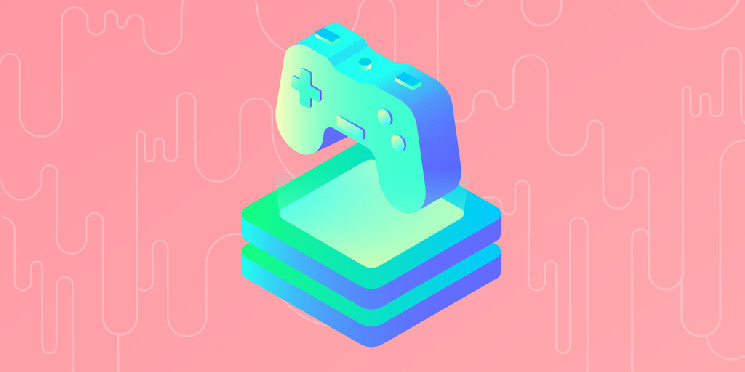If you’ve seen headlines about classic games like Pac-Man and Tetris running on Bitcoin, or a pixel-perfect port of iconic shooter Doom being playable on Dogecoin, you might be wondering: Wait… what does that even mean?
Fair question! The explanation isn’t all that complicated, thankfully, but the whole concept of video games running on blockchains designed solely for the purpose of digital money doesn’t make a whole lot of sense on the surface.
But thanks to the launch of NFT-like protocols on those chains, people are “inscribing” media like artwork and even playable video games on these decentralized networks—whether it’s to preserve them for eternity, or just for the novelty of it all.
Whatever their reasons, the end result is classic games that you can play right off of the blockchain. And here’s a brief look at how that all works, starting with a simple explanation of the tech that’s made such advances possible.
What are Ordinals?
The Ordinals protocol launched in early 2023 as a way to turn media into on-chain assets on Bitcoin, the original blockchain and home of the largest and best-known cryptocurrency. Unlike chains like Ethereum and Solana, Bitcoin doesn’t natively support executable code (in the form of smart contracts) that can power things like NFTs or decentralized apps and games.
So the creator of Ordinals, Casey Rodarmor, got crafty. He discovered a way for users to “inscribe” media onto an individual satoshi, which is the smallest denomination of Bitcoin. It’s equivalent to just 1/100,000,000 of a full Bitcoin.
And unlike many NFTs, which rely on external servers, Ordinals media is fully added to the chain itself—so any artwork, games, and apps put onto the Bitcoin blockchain are completely there intact.
The innovation of Ordinals has led to an explosion of experimentation around Bitcoin, including the launch of fungible tokens using the BRC-20 and Runes token standards, plus expansions of the Ordinals tech with “recursive inscriptions,” which let developers chain together multiple inscriptions to create richer apps and games.
It’s also led developers on other chains to mimic the Ordinals protocol and create similar functionality. That’s how we ended up with Doginals on Dogecoin, along with Ordinals-like assets on Solana, Avalanche, and BNB Chain.
How do you play games on-chain?
Ordinals and Doginals let users inscribe entire applications on-chain, assuming that they fit within the storage limits provided by each standard. That has allowed people to put full games on Bitcoin and Dogecoin, which can then be played through a web browser.
In execution, it’s really no different than playing a web game. The little applet runs in your browser window, and then you can control characters or complete actions using your keyboard and mouse. But because of the size requirements, such assets can only hold relatively simple games. That’s why classic titles are a perfect fit.
As such, games like Pac-Man, Zork, and Tetris are ideal inscriptions for Bitcoin. And the Dogecoin standard offers a little bit more space to work with, enabling a full-blown shareware version of influential first-person shooter Doom that apparently wouldn’t fit on a Bitcoin Ordinal. There’s a simple Doom knockoff on Bitcoin, but it really doesn’t compare to the real thing.
Now we’re starting to see original games pop up on these protocols too—such as Super Doginals, a classic arcade-style beat-’em-up with original artwork deployed on Dogecoin.
What’s the point?
This one’s harder to pin down, in part because we can’t assume the intentions of people who have inscribed these games on-chain. To be clear, it’s typically not the original creator or developer of these games that’s turning them into Ordinals or Doginals. They’re fans and/or developers, or just people who are experimenting with on-chain assets. Super Doginals is an exception to that, and perhaps the first sign of things to come there.
In some cases, such as with the classic games inscribed on Bitcoin during the first days after the Ordinals protocol launched on mainnet, it seems like people were just experimenting with what kinds of assets could fit and run on-chain. There’s a novelty factor to saying that you’re playing Tetris on Bitcoin, no doubt.
In other cases, there’s a feeling that the blockchain provides an immutable way to preserve games via a decentralized network that can’t be easily taken down. That’s what the creators of the Bitcoin Pizza collection said, at least, when they inscribed a Super Nintendo emulator on Bitcoin that lets users play digital copies of classic 16-bit games. They then did the same with a Nintendo 64 emulator.
Whatever their reason for inscribing the games, the end result is still the same: There are classic games playable via Bitcoin and Dogecoin. Assuming these networks remain up and active for many more years to come, those games will be there to play.
Editor’s note: This story was originally published on February 2, 2024 and last updated with new details on November 13.
Read the full article here

